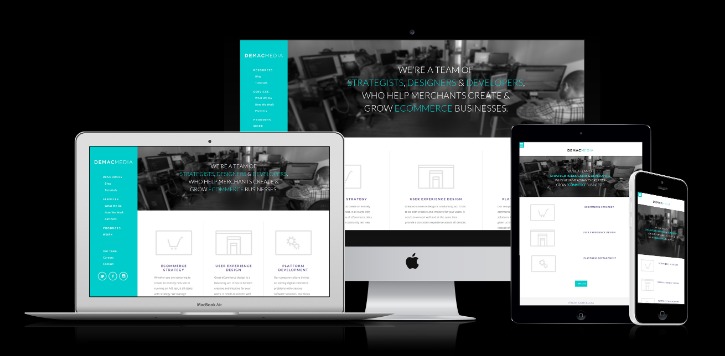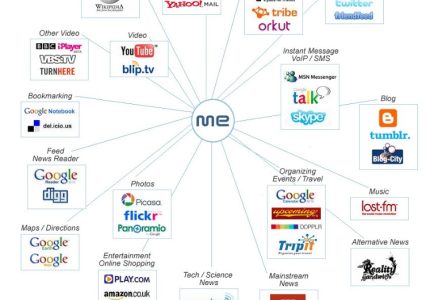Importance of Website Design in South Africa
In South Africa, a well-designed website is essential for businesses seeking to establish a strong online presence and connect with a diverse audience. Effective website design not only enhances user experience but also builds credibility and trust among potential customers. As the digital landscape continues to grow rapidly in the region, investing in professional website design has become a crucial factor for success in the competitive South African market.
Enhancing User Experience
In South Africa, effective website design plays a crucial role in establishing a strong online presence and attracting local and international audiences. A well-designed website not only reflects the professionalism of a business but also builds trust with potential customers. Enhancing user experience through intuitive navigation, fast loading times, and mobile responsiveness is especially important in a country with diverse internet access and device usage. By prioritizing usability and aesthetic appeal, South African businesses can engage visitors more effectively, increase conversion rates, and stay competitive in a rapidly growing digital economy. Ultimately, good web design serves as a vital tool for connecting businesses with their target markets and fostering growth in the vibrant South African market.
Boosting Business Credibility
In South Africa, effective website design is crucial for establishing and enhancing business credibility in a competitive digital landscape. A professionally designed website showcases a company’s reliability and commitment to quality, which can attract local and international customers alike. In a country with diverse audiences and increasing internet penetration, an appealing and user-friendly website ensures that businesses make a positive first impression, encouraging visitors to trust their services or products.
Moreover, a well-crafted website tailored to South African preferences and cultural nuances signals professionalism and attention to detail. This can differentiate a business from competitors, build brand loyalty, and foster long-term customer relationships. As online presence becomes vital for growth, investing in quality website design not only boosts credibility but also supports overall business success in South Africa’s dynamic market.
Increasing Customer Engagement
Effective website design plays a crucial role in increasing customer engagement in South Africa by creating visually appealing and user-friendly platforms that resonate with local audiences. A well-designed website not only captures visitors’ attention but also encourages them to explore products and services further, leading to higher conversion rates. In the South African market, where digital presence is rapidly growing, an intuitive and culturally relevant design helps businesses stand out amidst competition. Moreover, a user-centric approach ensures that customers can easily navigate the website on various devices, enhancing their overall experience. Ultimately, strong website design fosters trust, boosts brand credibility, and builds lasting relationships with South African consumers.
Key Features of Effective South African Website Design
Effective South African website design combines aesthetic appeal with functional performance to create engaging online experiences. Key features include responsive layouts that adapt seamlessly across devices, intuitive navigation that guides users effortlessly, and culturally relevant visuals and content that resonate with local audiences. Additionally, fast loading times, mobile friendliness, and accessibility are essential components that enhance user satisfaction and drive engagement in the South African digital landscape.
Localization and Cultural Relevance
Effective South African website design emphasizes localization and cultural relevance to engage users and build trust within the local community. Incorporating local languages such as isiZulu, isiXhosa, or Afrikaans alongside English enhances accessibility and inclusivity. Visual elements should reflect South Africa’s diverse culture, including imagery of local landmarks, traditional attire, and vibrant colors typical of regional art. Navigation should be intuitive, catering to both tech-savvy users and those less familiar with digital platforms. Ensuring the website is mobile-friendly is crucial due to high mobile internet usage across the country. Additionally, integrating local payment methods and contact details helps foster a sense of trust and convenience for South African users. Overall, a culturally tailored approach improves user experience and strengthens brand relevance in the South African market.
Mobile Responsiveness
Effective South African website design prioritizes mobile responsiveness to ensure a seamless user experience across all devices, reflecting the high mobile usage rates in the country. It incorporates culturally relevant visuals and content that resonate with local audiences, fostering trust and engagement. Clear navigation and intuitive layouts are essential for users to find information quickly, especially considering diverse literacy levels and language preferences. Additionally, fast loading times are crucial due to varying internet speeds in different regions. Incorporating local languages and culturally appropriate color schemes enhances accessibility and appeal. Overall, a successful South African website balances aesthetic appeal with functionality, ensuring inclusivity and ease of use for a varied audience.
Fast Load Times
Fast load times are a crucial aspect of effective South African website design, ensuring visitors have a seamless browsing experience and reducing bounce rates. In the competitive digital landscape of South Africa, where users access websites via various devices and networks, optimizing speed is essential for engagement and conversions.
- Optimized images and media files to reduce file sizes without compromising quality.
- Efficient coding practices, such as minimizing CSS and JavaScript files, to enhance load speeds.
- Utilization of content delivery networks (CDNs) to distribute content closer to users across South Africa.
- Regular website performance testing to identify and resolve speed bottlenecks.
- Choosing reliable hosting providers with robust infrastructure tailored for South African audiences.
Popular Website Design Trends in South Africa
South Africa’s evolving digital landscape reflects a blend of innovative and culturally inspired website design trends. As businesses and organizations strive to engage a diverse audience, designers are adopting visually appealing, user-friendly, and responsive layouts that cater to local preferences. These trends showcase how South African websites are balancing modern aesthetics with functional performance to create compelling online experiences.

Minimalist Design
Minimalist design has become increasingly popular among South African websites as businesses and organizations aim for clean, user-friendly interfaces that enhance user experience. This trend emphasizes simplicity, functionality, and elegance, allowing content to stand out without unnecessary clutter. In the South African digital landscape, minimalist websites help brands communicate their messages efficiently while catering to diverse audiences across the country.
- Use of ample white space to create a clean and breathable layout
- Simple color schemes often inspired by natural landscapes and cultural diversity
- Focus on high-quality visuals with minimal text to convey messages effectively
- Accessible and responsive designs tailored for mobile users, given high smartphone penetration in South Africa
- Streamlined navigation menus to improve user experience and site usability
Vibrant Color Schemes
South African website design is increasingly embracing vibrant color schemes to create engaging and lively online experiences. Bright and bold colors such as oranges, yellows, turquoise, and greens are popular choices, reflecting the country’s diverse culture and vibrant environment. This trend helps brands stand out and convey energy, positivity, and freshness to visitors. Designers often pair these vivid hues with modern layouts and dynamic visuals to capture attention and communicate a sense of innovation and cultural richness.
Integrated Social Media Elements
South Africa’s website design landscape is increasingly embracing popular trends that enhance user engagement and brand visibility. Integrated social media elements play a vital role in this development by allowing seamless sharing and interaction across platforms such as Facebook, Twitter, Instagram, and LinkedIn. Modern South African websites often feature social media icons prominently placed in headers, footers, or sidebars, encouraging visitors to connect and share content effortlessly. Additionally, embedded social feeds provide real-time updates and foster community engagement, making websites more dynamic and interactive. This integration not only boosts social proof but also broadens reach, reflecting the country’s diverse digital culture and the importance of social connectivity in its online presence.
Choosing the Right Web Design Agency in South Africa
Selecting the right web design agency in South Africa is a crucial step for businesses aiming to establish a strong online presence. With a vibrant digital landscape and diverse agencies offering a range of services, choosing the best partner can significantly impact your brand’s success. Understanding what to look for in terms of expertise, creativity, and industry experience can help you make an informed decision that aligns with your goals and budget.
Portfolio and Experience

When selecting a web design agency in South Africa, evaluating their portfolio and experience is crucial to ensure successful project outcomes. A strong portfolio showcases the agency’s range of work, creativity, and technical skills, providing insight into their ability to deliver diverse and high-quality websites tailored to different industries. Experience in South Africa also means understanding local market trends, consumer behaviors, and cultural nuances, which can significantly enhance the effectiveness of your website. By reviewing previous projects and client testimonials, you can gauge the agency’s reliability and capacity to meet your specific needs. Ultimately, choosing an agency with a proven track record in South Africa will increase the chances of creating a visually appealing, user-friendly, and impactful website that aligns with your business goals.
Understanding Local Market Needs
Choosing the right web design agency in South Africa requires a clear understanding of the local market needs and preferences. South African consumers value websites that are culturally relevant, user-friendly, and optimized for mobile devices, given the high mobile usage rate in the region. It’s essential to select an agency that appreciates the local context and can create designs that resonate with the target audience. Consider agencies with experience in South African industries and a portfolio that demonstrates familiarity with local trends, languages, and digital behaviors. This ensures your website not only looks professional but also effectively engages and converts local visitors.
Pricing and Packages
Choosing the right web design agency in South Africa is crucial for establishing a strong online presence that aligns with your business goals. It’s important to evaluate agencies based on their experience, portfolio, and understanding of local market needs to ensure a successful website project.
When it comes to pricing and packages, South African web design agencies typically offer a range of options tailored to different budgets and requirements. Understanding what is included in each package can help you make an informed decision.
- Basic Packages: Usually include a simple, responsive website with limited pages, basic SEO, and standard features. Ideal for startups or small businesses.
- Standard Packages: Offer more customization, additional pages, advanced SEO, and some level of content management system integration.
- Premium Packages: Designed for larger enterprises, these include complex functionalities, custom designs, e-commerce capabilities, and extensive SEO optimization.
Many agencies also provide custom quotes based on specific project needs. When selecting a package, consider the scope of work, ongoing support, and maintenance services to ensure your website remains effective and up-to-date in the competitive South African market.
Best Practices for South African Website Development
Effective website development in South Africa requires adherence to best practices that ensure accessibility, responsiveness, and cultural relevance. Understanding local user preferences and technological infrastructure is essential for creating impactful and user-friendly websites. By focusing on clean design, fast load times, and seamless navigation, developers can craft websites that resonate with South African audiences and support business growth in the digital landscape.
SEO Optimization
Effective South African website development combines culturally relevant design with technical best practices to ensure a user-friendly experience. Emphasizing responsive design ensures that websites function seamlessly across various devices commonly used in South Africa, such as smartphones and tablets. Incorporating local languages and currency options enhances accessibility and caters to diverse audiences. Optimizing for South African search engines involves targeted keyword research that reflects regional search behaviors and preferences. Ensuring fast load times by compressing images and utilizing efficient hosting providers improves user engagement and reduces bounce rates. Additionally, implementing clean, intuitive navigation and clear calls-to-action guides visitors effortlessly through the site. Regularly updating content relevant to local events and trends fosters community connection and improves SEO rankings. By adhering to these best practices, South African websites can achieve better visibility, increased engagement, and a stronger online presence in their regional market.
Accessibility Standards
Developing websites tailored for the South African market requires adhering to best practices in design and accessibility to ensure an optimal user experience for diverse audiences. Prioritizing accessibility standards and culturally relevant content helps create inclusive and effective online platforms.
- Follow Web Content Accessibility Guidelines (WCAG) to ensure the website is accessible to users with disabilities, including visual, auditory, and motor impairments.
- Use clear, legible fonts and sufficient contrast between text and background to enhance readability across various devices and lighting conditions prevalent in South Africa.
- Optimize website speed and performance, considering the varying internet speeds and infrastructure challenges faced by users in different regions.
- Ensure mobile responsiveness, as a significant portion of South African users access websites via smartphones and tablets.
- Incorporate local languages and culturally relevant imagery to resonate with diverse South African audiences, including isiZulu, isiXhosa, Afrikaans, and others.
- Implement easy navigation structures with intuitive menus and clear calls to action to guide users efficiently through the website.
- Utilize secure hosting and HTTPS protocols to protect user data, fostering trust and complying with local data protection regulations.
- Test the website across various devices and browsers common in South Africa to ensure consistent functionality and appearance.
- Include accessibility features such as keyboard navigation, text alternatives for images, and ARIA labels to support users relying on assistive technologies.
- Stay updated with evolving accessibility standards and local regulations, ensuring the website remains compliant and inclusive over time.
Security Measures
When developing websites for the South African market, it is essential to follow best practices that ensure a seamless user experience and robust security. Tailoring website design to local preferences involves incorporating culturally relevant visuals and content, while ensuring the site is mobile-friendly due to the high mobile usage in South Africa.
Implementing strong security measures is crucial to protect user data and maintain trust. Use HTTPS across all pages to encrypt data transmission, and regularly update software and plugins to patch vulnerabilities. Employ secure authentication methods such as two-factor authentication and strong password policies to safeguard user accounts.
Additionally, incorporating local payment gateways and complying with South African data protection regulations, such as POPIA, helps build credibility and ensures legal compliance. Regular security audits and monitoring for suspicious activities help detect and prevent potential cyber threats.
Optimizing website performance through efficient coding, caching, and server management enhances user experience and reduces bounce rates. Designing with accessibility in mind ensures the website is usable by all users, including those with disabilities, aligning with global and local accessibility standards.
Challenges in South African Website Design
Website design in South Africa faces a unique set of challenges driven by diverse user needs, rapid technological changes, and infrastructure limitations. Designers must craft engaging, accessible, and responsive sites that cater to a multilingual population with varying internet speeds and device capabilities. Overcoming these obstacles requires innovative solutions that balance aesthetics, functionality, and inclusivity in a dynamic digital landscape.
Internet Connectivity Issues
South African website design faces several challenges, primarily stemming from inconsistent internet connectivity across the country. Many users experience slow or unreliable internet connections, which can hinder the accessibility and functionality of websites. This often necessitates optimizing websites for faster loading times and low bandwidth usage to ensure a broader reach. Additionally, developers need to consider diverse devices and screen sizes, as mobile access is predominant in South Africa, further complicating design considerations. Connectivity issues also impact real-time features and user engagement, prompting designers to prioritize simpler, more resilient website architectures that perform well under varying internet conditions. Addressing these challenges is essential for creating inclusive and effective digital experiences in the South African context.
Cultural Sensitivities
Designing websites for South Africa involves navigating a unique set of challenges related to cultural sensitivities and diversity. With a multitude of languages, traditions, and beliefs, it is essential to create content that resonates inclusively with a broad audience. Ensuring that visuals, symbols, and language are culturally appropriate helps avoid misunderstandings or unintended offense.
Language plays a crucial role in South African website design. While English is widely spoken and understood, many users prefer content in their native languages such as Zulu, Xhosa, Afrikaans, or Sotho. Incorporating multilingual support can be complex but is vital for accessibility and engagement, requiring thoughtful translation and localization efforts.
Another challenge is balancing modern design elements with cultural relevance. Traditional motifs, color schemes, and imagery must be used carefully to reflect local identities without resorting to stereotypes. Sensitivity to cultural norms ensures that websites are welcoming and respectful to all user groups.
Furthermore, technological infrastructure varies across regions, affecting website performance and accessibility. Designers need to optimize sites for different devices and internet speeds, particularly given the diversity in technological access among South Africans. Ultimately, culturally sensitive and inclusive design practices contribute to more effective and respectful online platforms in South Africa.
Language Diversity
Designing websites for South Africa presents unique challenges due to the country’s rich linguistic diversity. With 11 official languages, developers must create content that resonates with a wide audience while maintaining clarity and accessibility. Balancing the needs of English-speaking users with speakers of isiZulu, isiXhosa, Afrikaans, Sesotho, and other languages requires thoughtful language integration and user interface considerations. Additionally, ensuring that multilingual content displays correctly across different devices and browsers adds to the complexity of website design in this context. Accessibility and cultural relevance are also essential to craft inclusive digital experiences that reflect South Africa’s diverse cultural landscape.
Future Trends in South African Web Design
South African web design is rapidly evolving as local businesses and organizations seek innovative ways to engage users online. Emerging technologies, changing consumer preferences, and a focus on mobile responsiveness are shaping the future of web design across the country. Staying ahead of these trends is essential for creating impactful and modern websites that resonate with South African audiences.
AI and Chatbots Integration
Future trends in South African web design are increasingly shaped by advancements in artificial intelligence and chatbot integration, transforming how websites interact with users. As businesses seek to provide more personalized and efficient experiences, AI-powered tools will play a pivotal role in customizing content, improving customer service, and streamlining user navigation. Chatbots are expected to become more sophisticated, capable of understanding local languages, cultural nuances, and complex inquiries, making digital interactions more natural and accessible for South African audiences. Additionally, responsive and mobile-first designs will continue to dominate, reflecting the high mobile device usage across the country. Incorporating AI-driven analytics will enable developers to gather insights into user behavior, facilitating data-driven decisions that enhance site functionality and engagement. Overall, South African web design will evolve to become more intelligent, user-centric, and culturally aware, supporting the growth of digital economies while fostering innovative online experiences.
Progressive Web Apps (PWAs)
Future trends in South African web design are increasingly influenced by the rise of Progressive Web Apps (PWAs), which offer a seamless and engaging user experience. As mobile internet usage continues to grow rapidly in South Africa, PWAs enable websites to function like native apps, providing faster load times, offline access, and improved performance on various devices. Web designers in South Africa are adopting this technology to meet the evolving expectations of users who demand quick, reliable, and accessible digital experiences. Additionally, integration of local cultural elements and responsive design ensures websites are both visually appealing and functional across different screen sizes and devices. Emphasizing user-centric design, ease of navigation, and innovative features through PWAs will shape the future of web development in South Africa, helping local businesses and organizations reach a broader audience effectively.
User Personalization Techniques
Future trends in South African web design are increasingly focusing on user personalization techniques to create more engaging and tailored online experiences. As internet penetration deepens and user expectations evolve, designers are adopting innovative strategies to cater to diverse audiences across the country.
One prominent trend is the integration of advanced user personalization techniques that leverage data analytics and AI to customize content based on individual preferences, behaviors, and locations. This approach helps South African websites provide more relevant information, products, and services to their visitors.
- Dynamic Content Delivery: Websites will adapt content, offers, and recommendations in real-time for each user, enhancing relevance and engagement.
- Localized Experience Customization: Tailoring websites to reflect South Africa’s diverse cultural backgrounds and languages ensures inclusivity and better user connection.
- Behavior-Based Personalization: Analyzing user interactions to adjust website interfaces, menus, and visual elements to fit individual browsing habits.
- Personalized Marketing Campaigns: Using data-driven insights to deliver targeted advertisements and promotions that resonate with specific demographic groups within South Africa.
- AI-Powered Chatbots and Assistants: Providing personalized customer support that understands user preferences and offers tailored solutions promptly.
These personalization techniques are expected to become standard in South African web design, helping businesses build stronger relationships with their audiences and stand out in a competitive digital landscape.





